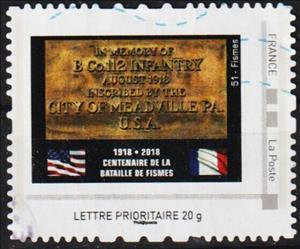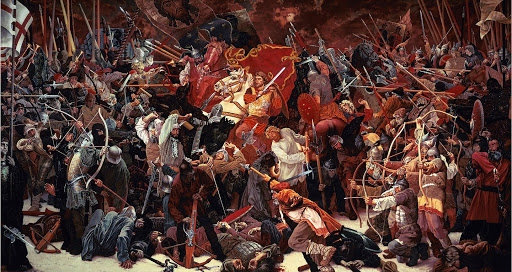Stamp: Centenary Battle of Fismes 1918-2018 (France 2018)
Centenary Battle of Fismes 1918-2018 (France 2018)
01 January (France ) within release Collectors : Centenary Battle of Fismes goes into circulation Stamp Centenary Battle of Fismes 1918-2018 face value Prioritaire No Face Value
| Stamp Centenary Battle of Fismes 1918-2018 in catalogues | |
|---|---|
| Colnect codes: | Col: FR-MON 2018-188/1 |
Stamp is square format.
Also in the issue Collectors : Centenary Battle of Fismes:
- Stamp - Centenary Battle of Fismes 1918-2018 face value Prioritaire;
- Stamp - Centenary Battle of Fismes 1918-2018 face value Prioritaire;
Stamp Centenary Battle of Fismes 1918-2018 it reflects the thematic directions:
An anniversary is the date on which an event took place or an institution was founded in a previous year, and may also refer to the commemoration or celebration of that event. For example, the first event is the initial occurrence or, if planned, the inaugural of the event. One year later would be the first anniversary of that event. The word was first used for Catholic feasts to commemorate saints. Most countries celebrate national anniversaries, typically called national days. These could be the date of independence of the nation or the adoption of a new constitution or form of government. The important dates in a sitting monarch's reign may also be commemorated, an event often referred to as a "Jubilee".
A battle is an occurrence of combat in warfare between opposing military units of any number or size. A war usually consists of multiple battles. In general, a battle is a military engagement that is well defined in duration, area, and force commitment.
World War I or the First World War (28 July 1914 – 11 November 1918), also known as the Great War, was a global conflict between two coalitions: the Allies (or Entente) and the Central Powers. Main areas of conflict included Europe and the Middle East, as well as parts of Africa and the Asia-Pacific. There were important developments in weaponry including tanks, aircraft, artillery, machine guns, and chemical weapons. One of the deadliest conflicts in history, it resulted in an estimated 30 million military casualties, plus another 8 million civilian deaths from war-related causes and genocide. The movement of large numbers of people was a major factor in the deadly Spanish flu pandemic.


